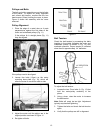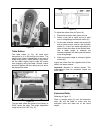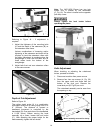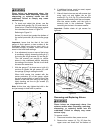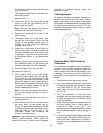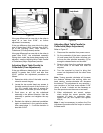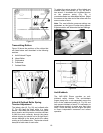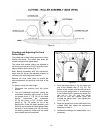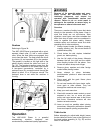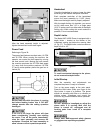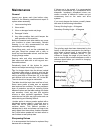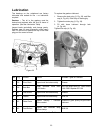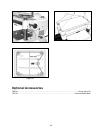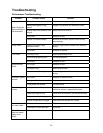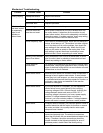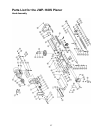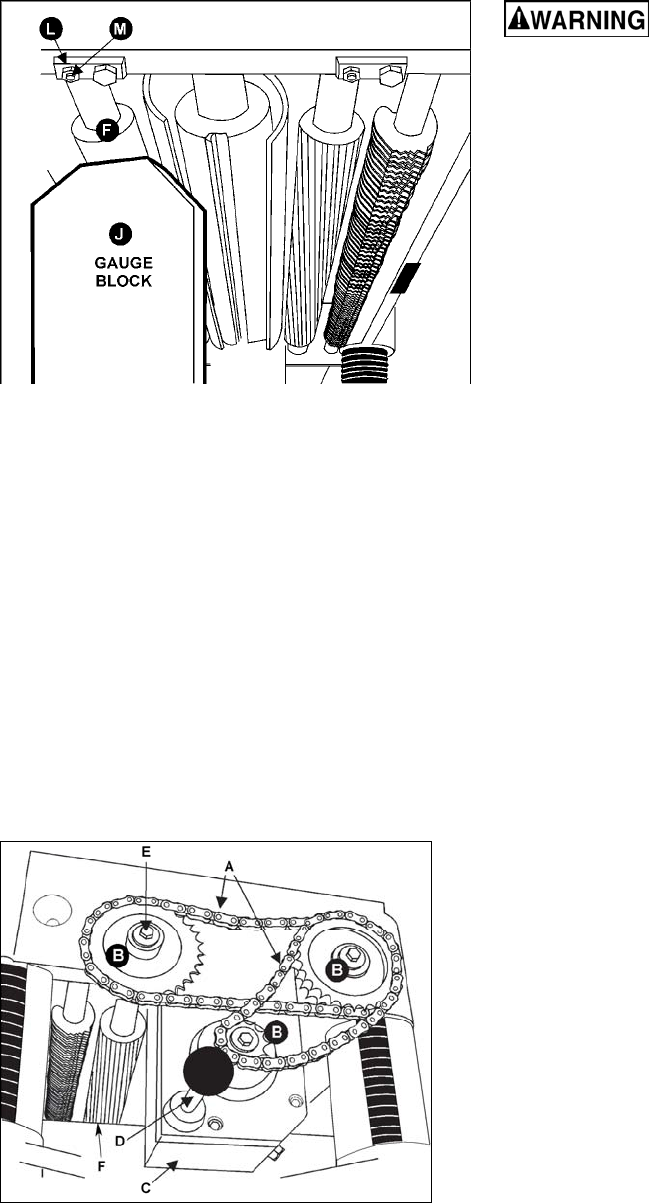
20
Figure 33
Gearbox
Referring to Figure 34:
The JWP-16OS Planer is equipped with a spiral,
serrated infeed roller (F) and a solid outfeed
roller. When the feed rollers are engaged, they
turn to feed the stock. The feed rollers are driven
by chains (A) and sprockets (B) in the gearbox.
The gearbox is located on the right side of the
planer directly behind the table lock knob (A,
Fig. 35). The gearbox transfers power from the
belt-driven cutterhead to the power feed rollers.
A two-speed transmission, controlled by a
push/pull lever (D), moves the stock through the
planer at either 16 or 20 feet-per minute. The
push/pull lever is set while the machine is
running.
Figure 34
Operation
The JWP-16OS Planer is a powerful
woodworking machine, designed and
constructed for professional-quality applications.
Because of its powerful motor and razor-
sharp knives, the JWP-16OS Planer is
inherently dangerous and should be
operated with considerable caution and
respect. Failure to do so could result in
damage to the machine or severe injury to
the operator or others in the work area.
Overview
There are a number of safety issues that relate
directly to the operation of the planer. Keep in
mind that these are not all-inclusive. Work
situations, wood types, and other variables that
differ from shop to shop must be considered in
order to operate this planer safely. Always
consider safety and common sense first when
operating this or other machinery.
1. Always inspect lumber for defects (warping,
cupping, twisting, etc.). Do not use lumber of
questionable quality.
2. Check lumber for nails, staples, imbedded
gravel, etc. before planing.
3. Use the full width of the planer. Alternate
between the left, the right and the middle
when feeding lumber into the planer. Your
knives will remain sharp much longer.
4. Remove glues, epoxies and other foreign
matter before planing lumber.
5. Never attempt to plane laminates,
particleboards, plastics or other man-made
materials.
6. Plane wood with the grain. Never plane
across the grain.
7. Do not use boards with loose knots, splits,
cross grain or other defects. They can
damage the machine and cause injury.
8. Keep your work area clear.
9. Wood with excessive water content or wood
exposed to rain, ice, or snow will plane
poorly and cause excess wear to the knives
and motor. Excessive moisture will also
hasten rust and corrosion.
10. Learn as much as possible about planing
procedures. Alternative publications present
more wood specific planing requirements.
Table Locks
Before attempting to adjust table height, loosen
the two table lock knobs, one on the right front of
the head casting assembly (A, Fig. 35) and the
other on the left rear.



